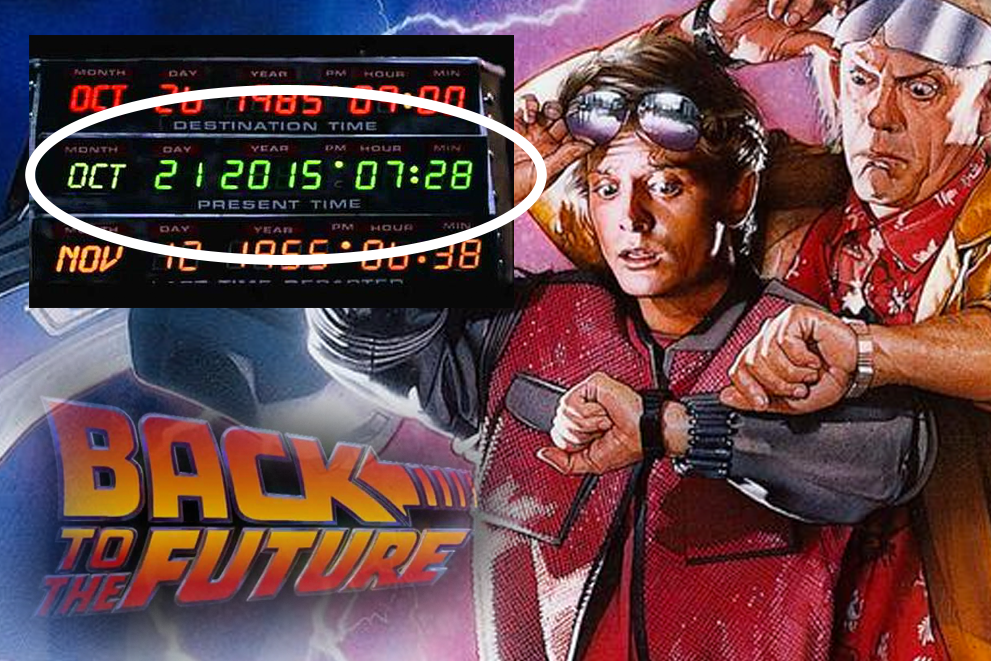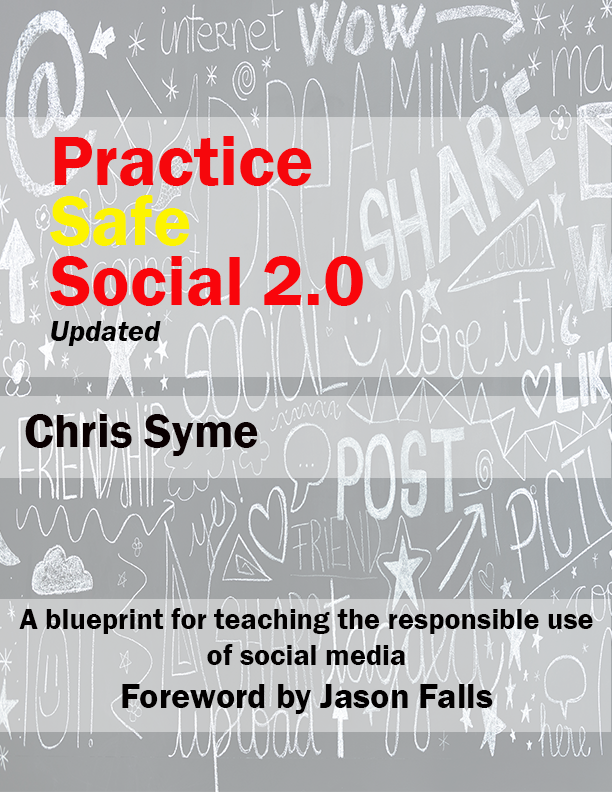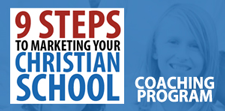Retention Course – Twitter
RETENTION: Keeping Your Best While you expect every family enrolled in your school to be a loyal ambassador, unfortunately that is not always the case. Some attrition is normal, but your retention strategy should be as intentional as your recruiting strategy to fill...Heads of School: It’s #BacktotheFuture Day, so talk about the future! #bttf2015

Today is a unique “holiday”. It is “Back to the Future” Day – commemorating that future day featured in the 1980’s classic “Back to the Future II” movie. There are 2 main hashtags: #backtothefuture and #bttf2015.
So what does this odd cultural day have to do with your school?
When it comes to social media content, one tip is to look for trending topics and align your brand with that topic (unless it is inappropriate). There are many crazy social media “holidays” that occupy people’s newsfeeds on Instagram, Facebook and Twitter. Some of the more common ones that occur annually:
- International Talk Like a Pirate Day (September 19)
- May the 4th Be With You (Star Wars’ reference to May 4th)
- April Fool’s Day (social media loves this day to prank their followers)
- Pi Day (March 14 . . . get it? 3.14!)
There are so many other wacky holidays that you can find online – it seems there is a holiday for every day!
On this once-in-a-lifetime social media day (“Back to the Future Day”), what can you do to join the fun? Here are a 5 quick ideas:
- The year 1955 is also prominently featured in the prequel 1985 movie. Post some throwback pictures to 1955, showing how your campus has changed (if your school is that old!)
- If you have a Head of School or faculty member who was born in 1955, grab a quick video of them talking about their life, the way education has changed or the way life used to be in the 1950s.
- Since 1985 is one of the other years associated with the sequel movie, use the same logic as before. Throwback pictures are possibly easier to find for 1985 so dig those out of the yearbooks you have on the shelf in the library!
- Perhaps you can look for teachers, coaches or administrative staff that remember seeing the movie in their teens (the original movie was released in 1985). Shoot a quick video asking people what their favorite scenes were.
- Your Head of School can write a quick blog post, record a brief audio and post it to SoundCloud, or shoot a short video about the FUTURE of your school. If this day is celebrating that we have arrived “back to the future”, then what better time to lay out his/her vision for the next 5, 10 or even 30 years!
Have fun today . . . and as Doc Brown said in the movie to Marty McFly, “do it in style!”
-Randy
*BONUS CONTENT* – grab a free copy of our Content Calendar spreadsheet (with many of these wacky holidays listed alongside other key events and dates throughout the year). This will help you plan your social media better . . . and weird and wacky holidays like this won’t creep up on you!
*BONUS TIP* – don’t forget that in 2016, we have a LEAP YEAR. Is there anything unique you can do with that? Be creative!
*SIGN UP FOR 5 FREE WEBINARS* – register for our “Pumpkin Spice Webinar Series” to get 5 free presentations on school marketing.
Do you know the best social media tools to use for your school?

Social media has emerged in the past 5-10 years as an integral part of every school’s marketing efforts. Unfortunately, those who succeed in it are rare. Here are some general statements that reflect how some of my conversations with school marketing folks have gone:
- “I always thought that since social media was free advertising, we would see a great return and I could ditch my advertising budget on print.”
- “Things change so often, especially on Facebook, that I don’t always keep up. Sometimes I just give up.”
- “I try and make life easier by posting the same thing to Facebook, Twitter and Instagram. But people say the content should be unique to each platform’s audience. But who has the time to customize it?”
- “I hear that people are getting on Instagram instead of Facebook. But is Facebook dead?”
- “I never thought of using Pinterest. Why? Isn’t it just for recipes and home decor?”
If you are frustrated and unsure of your social media strategy, let me encourage you to sign up for the “Pumpkin Spice Webinar Series” going on right now. Every Tuesday for 5 consecutive weeks, we will release a presentation all about school marketing. The first webinar is LIVE and the title is, “Social Media Strategy: Growing Your Pool of Potential Students”. This webinar gives you a solid foundation in understanding your social media strategy.
But do you know the best social media tools to use for your school?
Let me run through a quick overview of several key tools that I think have a strong place in your school’s marketing strategy:
- BLOG: whether it is called a “blog” or “news” or “success stories”, hopefully your content management system has a tool that you can easily (without an extra charge) add quick content. This is such a versatile tool on your website that you must have it. To learn more about using a blog in your marketing, listen to this podcast episode about blogging for your school.
- REVIEWS: whether it is your Google page, your listing on GreatSchools.org, or the reviews on your school’s Facebook page, you need to accumulate 2-3 reviews each month on these three critical sites. Reviews verify to prospective parents that your school is worth the investment and the best choice in a competitive landscape. To learn more about the importance on online reviews, click here.
- EMAIL MARKETING: do not let those emails sit in a drawer somewhere handwritten on inquiry cards. Put those email addresses into a system like MailChimp or Constant Contact and create a consistent communication link with everyone who has visited your campus, inquired over the phone (ask for their email!), and who have downloaded content from your website (in exchange for their email address, you deliver valuable content). Not every family is ready to click on your “APPLY NOW” button. Nurture that relationship with email marketing. Read: “Using email marketing to engage prospective families (and doing it the right way!)”
- FACEBOOK: while some of your younger prospective moms may be totally consumed with Instagram, statistics show that Facebook remains a vital tool for every school. The data shows that moms and dads over 30 still consume Facebook the most so keep the great content flowing for them to know, like and trust you as the best educational choice for their child. Listen to “What to Post on Facebook?”
I think there’s a strong case as well for YouTube and/or Vimeo for video. You can also upload native video directly to your Facebook page and add a “Call to Action” at the end of the video which is a nice touch. Twitter is valuable on so many levels for dissemniating information, connecting with alumni and local media and to communicate your distinct claims. But I would do more than simply linking my Facebook posts to Twitter because the Twitter culture invites (even “demands”) more content than typical Facebook users want to see. Instagram and Pinterest are strong visual content tools and, while both involve a lot of visual content, they deliver different results.
To get further comments about the best social media tools, sign up for the free “Pumpkin Spice Webinar Series” where each Tuesday for 5 consecutive weeks (starting Oct 20, 2015), we will release a new 20-30 minute presentation about school marketing. The second webinar in the series is on this topic, “The Best Social Media Tools for Your School”.
Click the image below to register . . .
It’s Time For Social Media Training For Students (with guest @cksyme)
[GUEST POST from Chris K. Syme]
______________________________
It’s back-to-school time and in addition to those new backpacks filled with books, pens, and paper, students will be packing their smartphones as well. In recent years, administrators, teachers, and coaches have been wringing their hands about what students are saying on social media. Some have considered banning the use of social media on campus and others are adopting strict bullying policies.
Despite what you decide to do about smartphone use at school, it’s time for K-12 schools to start thinking about adding social media responsible use training to their curriculum. Some school districts already have mandatory classes based on approved curriculums and there are lots of great resources out there to help put something together. But what if you don’t have those resources?
After years of traveling the country training students, athletes, and coaches to use social media responsibly I have learned a few things:
- Training is not foolproof. You cannot stop impulsive teenagers from posting something dreadful on social media. You can only lower the risk by education.
- Training that isn’t mandatory will only be attended by students that don’t need it. This is evergreen. If something is important enough, it should be part of a standard curriculum. Granted, parents need to be involved and permission needs to be asked, but all students should have it.
- Training needs to be age appropriate. Middle school kids need different training than high school kids and college kids need an entirely different treatment. You wouldn’t teach a beginning cook how to make a soufflé and you shouldn’t treat all your students the same. Each age group has different social group conventions that require a different approach to social media.
- There are three learning levels in every group: those that already know it, those that would adopt it with the right information, and those that don’t give a rip. Teach to the middle group.
- Every social media training curriculum needs to include four sections: how to protect privacy, how to protect and build your reputation, how to prevent cyberharassment, and how to build a brand with social media. The last module can be dropped for middle school kids.
Protecting Privacy
Facebook alone has over one billion active monthly users and 13 million of them have never touched their privacy settings, according to research done by Marketo.
According to the latest Pew Internet research (May 2013) on teen online privacy, teens are sharing more personal information on social media today than they were when the first Pew privacy study was done in 2006. Either they do not value privacy or we are failing to educate them, or both.
- 91% post photos of themselves, up from 79% in 2006
- 71% post their school name, up from 49%
- 71% post the city or town where they live
- 53% post their email address, up from 29%
- 20% post their phone numbers, up from 2%
Do these stats show that young people are more confident about their privacy on social media or that they are less concerned? Sixty percent of teens in the same survey said they have their Facebook profiles set to “friends only” and report high levels of confidence in their ability to manage their privacy. It could be their definition of privacy does not include their personal information. In my experience, teens do not equate the sharing of personal information with privacy. And, they are not 100 percent sure who can actually see what they are posting on social media.
You need to be teaching students the important privacy settings they need to address. You’d be surprised how many students believe that all their social media is private. Screenshots of privacy settings on a laptop and mobile devices help in your training. I recommend walking students through the platforms individually and showing them how to turn on notifications for tagging, disable location, remove email and phone numbers from About sections, as well several other key areas. I also encourage them to unfriend people they do not know personally and possibly protect their Twitter and Instagram accounts.
Protecting And Building Reputation
In 2011, the rap artist Drake released a song called “The Motto” that popularized the acronym YOLO or “you only live once.” The phrase spawned a hashtag on Twitter and other social media that began to epitomize reckless youth behavior accompanied by a disdain for consequences of any kind. But it was nothing new.
Every generation has its carpe diem. When I was young, there was a song by a group called The Grass Roots where the chorus sang, “sha-la-la-la-la-la live for today, and don’t worry ‘bout tomorrow.” Three Doors Down did their version that says, “I won’t look back to regret yesterday, we’re not handed tomorrow, so I’ll live for today.”
Risky behavior isn’t just the moniker of youth. It seems to be the behavior of choice for many celebrities, corporate business owners, professional athletes, and others in the media spotlight. It’s the way to get noticed. Unfortunately for many, it’s also the way to ruin a reputation. Most people cannot afford to be known for despicable behavior. They have to find jobs, make a living, and maybe support a family. In his recent book, So You’ve Been Publicly Shamed, Jon Ronson describes the devastation a social media screw-up can cause. Benjamin Franklin once said, “it takes many good deeds to build a reputation and only one to ruin it.” And in today’s culture, social media is the accelerant that will ruin it quicker than Urkel can say, “Did I do that?”
The biggest challenge for the YOLO generation is to figure out how to live a regular life while building a good reputation at the same time. But prohibition is not the answer. Teachers and administrators also need to remember that social media is the new after school hangout. A seminal book by Danah Boyd called It’s Complicated should be a mandatory read for all teachers. Boyd, a former researcher for Microsoft spent several years doing case studies on how teen communicate on social media. It’s an eye opener. Kids need to be on social media. It’s their community center. Let’s teach them how to use it responsibly.
This is the section of the training where I usually show five good lessons from tweets using screenshots of well know teen idols or athletes that use social media well. I also teach five lessons from bad tweets using screenshots of those that screw up. Unfortunately, the latter is much easier to find. This section also needs to include how to handle negative subjects on social media, how to apologize, and the golden rules of social media posting. I also try and push (sometimes to deaf ears) that social media is forever. Jon Ronson’s book does a very good job of illustrating that if you need some background.
Lowering Your Risk of Cyberharassment
I hope we all know that cyber bullying is rampant. These recent statistics via nobullying.com show the scope of the problem:
- Nearly 1 in 3 students report being bullied during the school year (National Center for Educational Statistics, 2013).
- 6% of high school students in the US report being bullied at school in the past year. 14.8% reported being bullied online (Center for Disease Control, 2014).
- 64 percent of children who were bullied did not report it; only 36 percent reported the bullying.
- More than half of bullying situations (57 percent) stop when a peer intervenes on behalf of the student being bullied.
- School-based bullying prevention programs decrease bullying by up to 25%.
- The reasons for being bullied reported most often by students were looks (55%), body shape (37%), and race (16%).
In your training, start out by identifying the four basic types of cyber harassment:
Bullying: mean-spirited, degrading behavior meant to intimidate and harass. This could be anonymous or from someone the victim knows.
Unsolicited inappropriate social media content: this usually comes in the form of text messages or emails that are offensive or threatening. Often sexual.
Fake accounts: either an outright stolen identity or parody account set up to pretend to be someone else or make fun of a known person.
Inappropriate sports fan behavior: Crass, mean-spirited posts aimed at a particular coach or athlete. Usually someone the victim does not know.
In my trainings, I then proceed to identify 16 ways students can lower their risk of being bullied online.
Personal Branding
I don’t recommend this portion of training for younger students as I think the concept is wasted on most of them. Until they get to high school and are applying for jobs and scholarships, they don’t see or understand the value of building a brand. But it doesn’t hurt to touch on the subject. Many middle school kids are working already. They need to know that their lawn mowing business can be ruined by a bad social media post.
High school students may not be motivated by a career yet, but many have their eye on a college scholarship, whether athletics or academic. It’s been very well documented that recruiters, both athletic and academic, are looking at social media for the same reasons that employers are. Some college coaches are going public to let prospects know their social media was a factor in rejecting them. Some athletes catch themselves in time, but others are hampered by unknowing coaches, school administrators, and parents. Social media has certainly changed the face of college athletics recruiting. And the admissions officers across campus are employing the same screening tactics, according to a 2013 survey by CareerBuilder.
Many high school students are starting to think about a career. They need to understand that what they post on social media now will be available to future employers to peruse. CareerBuilder offers this basic advice:
- Take down any inappropriate pictures. No drugs, alcohol, sexually suggestive behavior. Use whichever golden rule works best for you from chapter two.
- Clean up your profanity. Cursing and vulgar language may be cool, but it’s more effective in person. Keep it offline.
- Don’t go on a crazy rant. Don’t bad mouth coaches, teammates, bosses, co-workers, rivals – you get the picture.
- Use real language. If people need a decoder ring to understand your tweets, obviously your Twitter account should be private. Remember what employers said about bad communication skills. Don’t let this be your motto: “OMG I h8 inglish.”
- Don’t be intolerant: The majority of employers in a CareerBuilder survey were concerned about discriminatory comments about race, gender, and religion.
- You shall not tell a lie. Did you really do that internship at the local newspaper or did you just deliver newspapers on Sundays?
Integrating these four main concepts into your social media training will give your students and teachers a good knowledge base on how to use social media responsibly.
________________________________
For more information on how to train students and teachers to use social media responsibly, Chris’ book Practice Safe Social 2.0 is available on Amazon.com. Feel free to email me with questions and comments at chris [at] cksyme.com. You can also follow me on Twitter @cksyme.
Chris Syme has over 25 years experience in the communications industry and is principal at CKSyme Media Group. Her agency specializes in social media marketing, virtual assistant services, and digital communication services for self-published authors and higher education. She is a former university media relations professional. Chris is a frequent speaker on the national stage and the author of two books on social media: Listen, Engage, Respond and Practice Safe Social 2.0. Her agency won the 2014 SoMe Award for Social Agency Of The Year. Her new book, SMART Social Media For Authors will be released in fall 2015.
PIN FOR LATER (image will enlarge when pinned)









